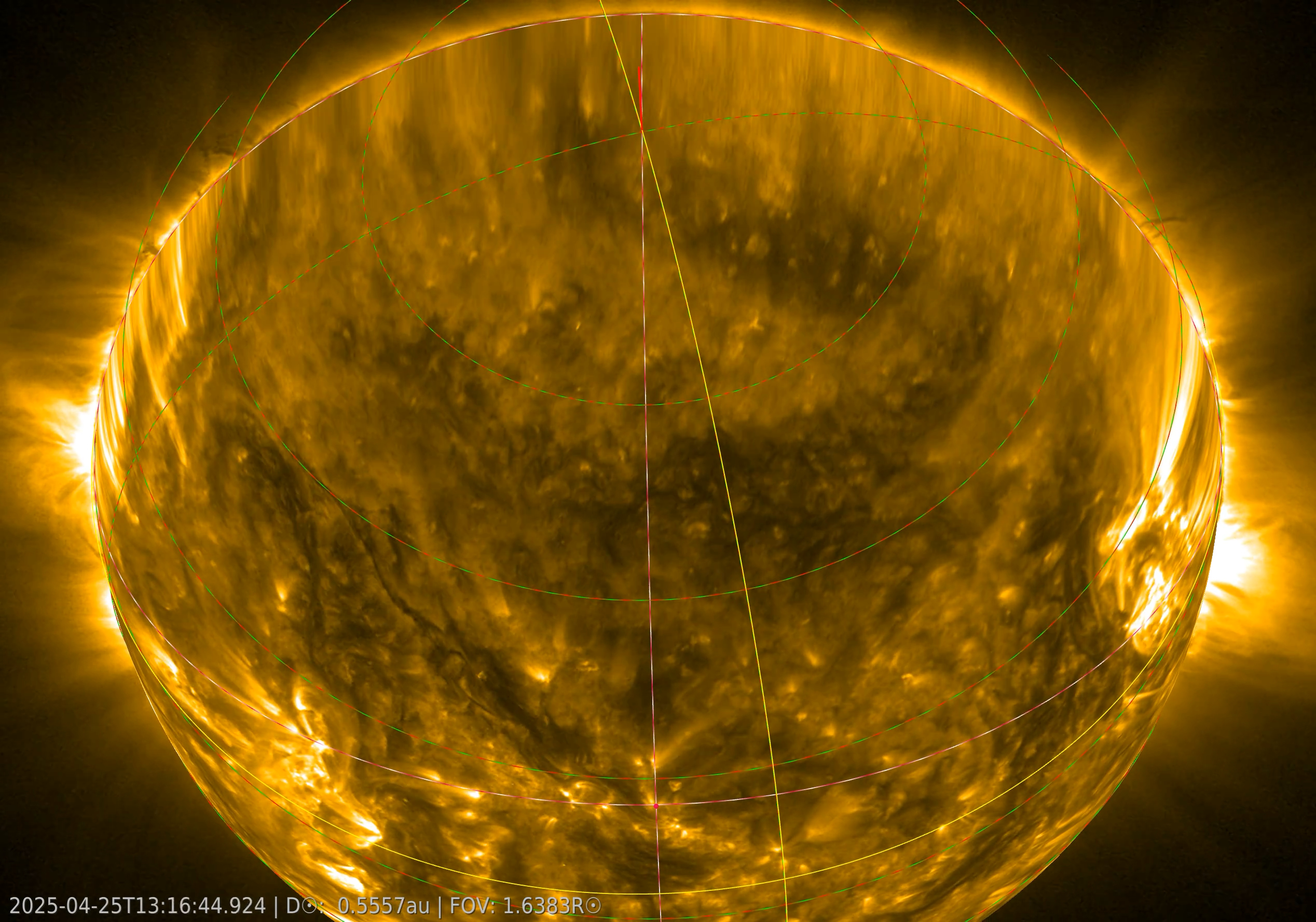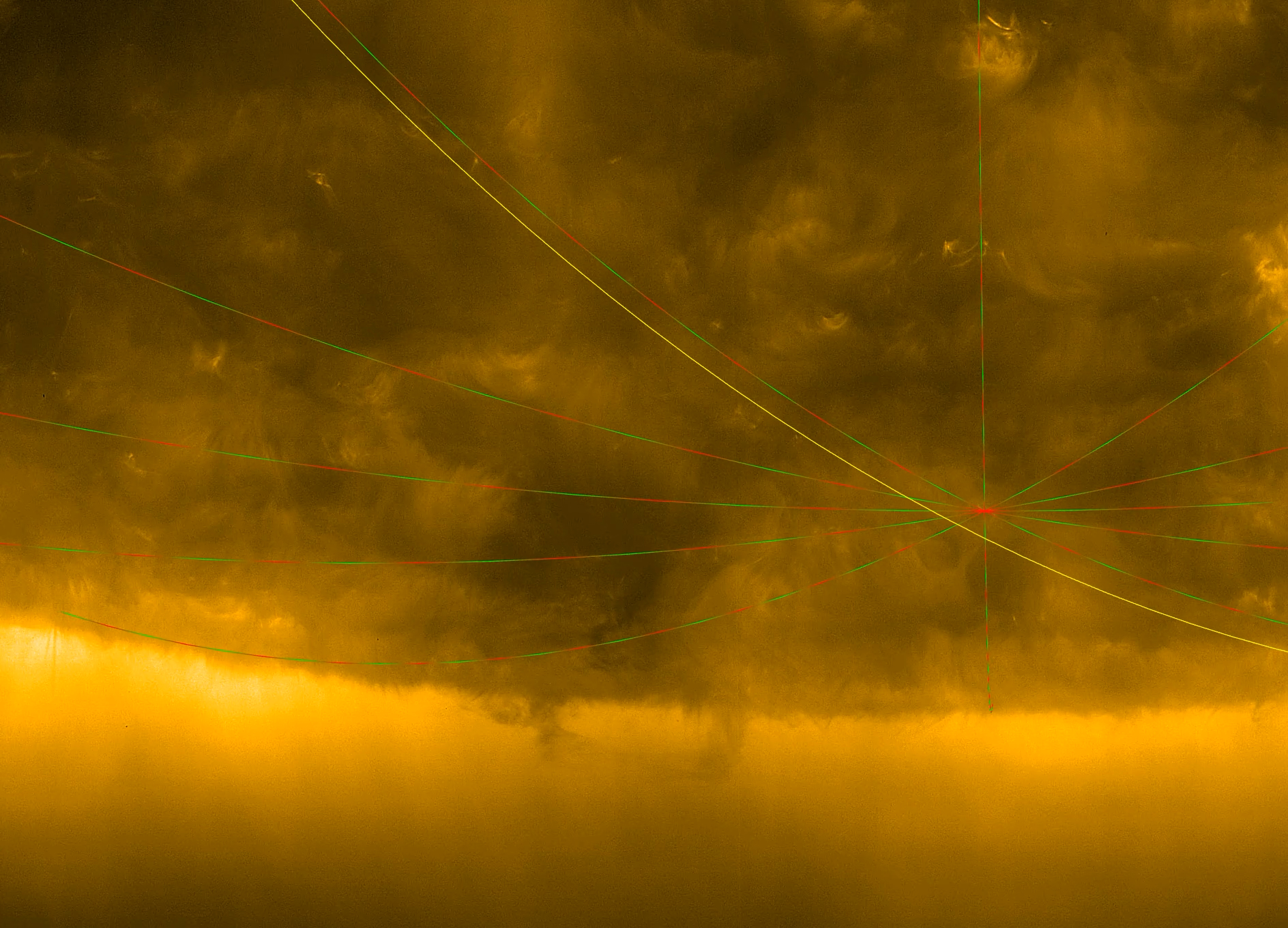First view of the solar poles with EUI
Thanks to a push from planet Venus earlier this year, the orbit of the Solar Orbiter spacecraft was tilted. A century ago mankind raced to explore the poles of the Earth, now Solar Orbiter made its way to the poles of the Sun. For the very first time the solar poles have been imaged!
All images of the Sun up till now were taken from the ecliptic, the plane in which Earth and the other planets orbit around the Sun. Our view of the Sun has always been a side view, centered around the solar equator. Now that Solar Orbiter has a tilted orbit, currently at an angle of 17 degrees, we get to see the Sun more from the top.
In March of this year the Extreme Ultraviolet Imager (EUI), a set of telescopes onboard Solar Orbiter that are operated from the Royal Observatory of Belgium, took the very first images of the south pole. Read the ESA News about these observations here.
New: a sneak preview of the solar north pole
After the southern passage, Solar Orbiter continued its expedition to the solar north pole. The images of this flight have just arrived!

This movie shows Solar Orbiter’s tilted view and zoom in to the Sun’s north pole. Solar Orbiter used its Extreme Ultraviolet Imager (EUI) instrument to take these images between 25 and 29 April. The dashed red-green lines show the solar latitudes and longitudes (Stonyhurst grid), while the solid yellow lines show the centre of Earth’s view (click on the image to see the video). Credit: ESA & NASA/Solar Orbiter/EUI Team, D. Berghmans/Royal Observatory of Belgium.
At the Royal Observatory of Belgium, scientists waited impatiently for the first images of the solar poles. Cis Verbeeck, EUI project manager, explains: ‘From these polar observations we expect a better understanding of how the Sun’s magnetic field changes and creates the solar activity cycle. Together with measurements of the solar wind coming from the poles, this will improve our space weather predictions.’


